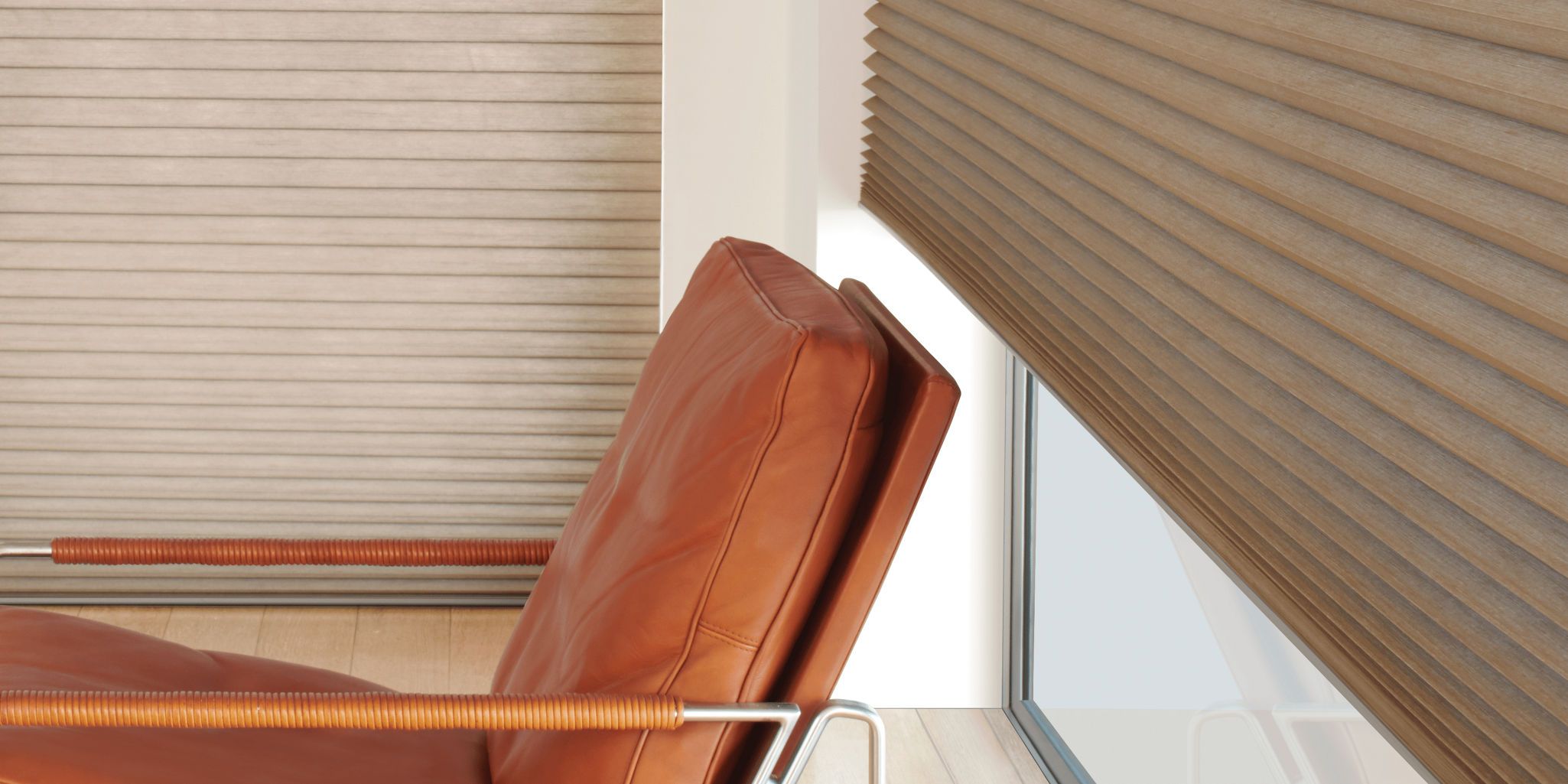
Inside vs Outside Mount Blinds
Buyer's Guides
Inside vs Outside Mount Blinds
May 16, 2022
by Hunter Douglas
Should you mount your window coverings inside the window frame or outside it? Here are a few tips to help guide you through the decision-making process.
So you’ve chosen the perfect window coverings … but there’s still one more decision to make: how to install them—inside or outside mount? In other words, should you mount your window coverings inside the window frame or outside it? What are the pros and cons of each? How do you decide? Here are a few tips to help guide you through the decision-making process.
Why Choose Inside Mount Shades?
Designer Roller Shades Fabric: Yorkshire Color: Whipcreme
The most common way to hang window treatments is with an inside mount, meaning installing your window treatments within the window casing. This clean, finished look is perfect if you want to highlight the decorative trim around your windows or you have a deep sill that you can use as a shelf. Inside mount also makes sense if you don’t want your window treatments to catch on your drapes.
You Can’t Use an Inside Mount If …
If there’s not enough depth between the glass and the end of the window casing, you wouldn't want to use an inside mount because the valance could extend outside the window or the window treatment may not lie flush with the window frame. Also, if there are any obstructions like locks, handles or cranks, the window treatments won't hang properly.
Parkland® Wood Blinds Material: Basswood Color: White Sand
Everwood® Faux Wood Blinds Material: Patina Color: Chateau
Other Considerations
There are a couple of things to be aware of if you mount your window treatments inside the window frame. There will be a small light gap on each side of your shades to allow for smooth movement. But you can find plenty of room-darkening and blackout solutions to better control the amount of light entering the room. The LightLock™ system, available on Duette® Honeycomb Shades, features innovative light-blocking channels for achieving near darkness.
Another thing to consider about inside mounted window treatments is that when fully raised, the stack that’s gathered at the top of the window can obscure your full view.
Why Choose Outside Mount Shades?
Designer Screen Shades Fabric: Empire Color: Fence Post
For the ultimate flexibility, mount your window treatments on the outside of the window frame. This is a great choice if you want to create the illusion of a larger window, creatively dress an odd-shaped window or hide unattractive trim. Just make sure there are no doors, cupboards or other obstacles in the way that could block the window treatment from operating properly.
There are some advantages to using an outside mount—when you raise your window treatment, you can take in the entire view. When you close your window treatment it will cover the entire window, so it blocks more light than window treatments mounted on the inside of the window casing. When paired with blackout fabrics, outside mounted window treatments work great in areas where you want less light, like bedrooms, nurseries and home theaters.
If there are any handles or cranks on the inside window casing, mounting your shades on the outside will help clear those obstacles. Your window frame helps protect your window treatments, so mounting on the outside of the frame is discouraged in high-traffic areas.
Vignette® Roman Shades Fabric: Pampa Color: Chia
Duette® Honeycomb Shades Fabric: Architella® Thea Color: Hudson Gray
Can You Mount Window Treatments on the Window Trim?
Absolutely! As long as the trim is flat and meets the minimum requirements, you can mount your window treatments on the trim. Mounting this way is also convenient because the only measurements you need are the dimensions of the trim. Your window treatments will blend in seamlessly with the natural design of the window.
Inside or Outside Mount for Shutters?
While you can mount shutters either inside or outside the window frame, it’s best to mount them inside if you have decorative trim surrounding your windows that you want to show off. If you don’t, or if you’re covering a door that has a very shallow frame, mounting them on the outside of the frame is the way to go.
Palm Beach™ Polysatin™ Shutters Color: Bright White
For rooms that have a lot of sun coming in, Palm Beach™ Polysatin™ Shutters are the most durable option. They have the look of finely painted shutters, but are guaranteed never to warp, crack, fade, chip, peel or discolor, regardless of extreme heat or moisture.
Outside Mount Installation Requirements
As long as there are at least two inches of level surface above the window trim, you can attach the outside mounting brackets right on the wall. Or you can mount the brackets on the window frame itself. Say you have a heavy molding—then projection brackets or shims may be your best option.
One Last Note
There are so many options when it comes to window treatments—Roman shades or roller shades? Hardwood or vinyl? Light-filtering or room-darkening? But one of the most important decisions you’ll make is how you want to mount them—because that will affect your decision and the overall appearance of your space.
Take a look at each room separately and weigh the pros and cons of each mounting option—some rooms may look better with the window treatments mounted on the inside of the frame where others look better mounted on the outside.
MORE BUYER'S GUIDES
View allRequest a Consultation
Connect with a local dealer for personalized service.